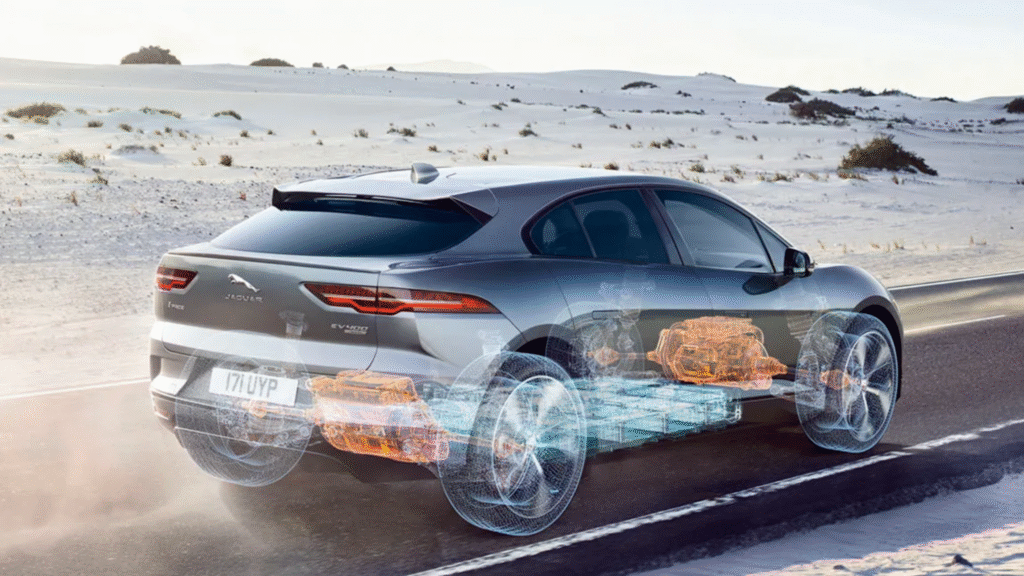The way we drive is changing, and the pace of this change is accelerating faster than ever before. Electric Vehicles: The future of driving is no longer a futuristic concept; they’re now a reality on highways, in parking lots, and even in our homes.
Electric vehicles (EVS) are no longer just for tech lovers; they’re reshaping how we think about mobility, sustainability, and the future of driving.
In this guide, we’ll explore how electric vehicles are leading the charge toward cleaner transportation. You’ll learn about the benefits, challenges, and innovations shaping EV adoption around the world.
Why Electric Vehicles Are Gaining Momentum

Electric vehicles are more than a trend; they represent a fundamental shift in the automotive industry. With rising fuel costs, growing environmental concerns, and significant technological advancements, people are seeking cleaner, more efficient ways to drive.
Governments, automakers, and consumers are all moving in the same direction: toward a fully electric future.
Cleaner Energy, Less Pollution
EVS produce zero tailpipe emissions, making them a major part of the fight against air pollution and climate change.
Electric Vehicles: The Future of Driving – Advancements Make EVS Practical
With longer battery life, faster charging stations, and falling prices, EVS are now a realistic option for everyday drivers, not just early adopters.
Top Benefits of Driving an Electric Vehicle
Owning an electric vehicle brings more than just bragging rights. The benefits range from cost savings to environmental impact and even performance.
Lower Operating Costs
Charging an electric vehicle (EV) is significantly cheaper than refuelling with gasoline. Maintenance costs are also lower due to the fewer moving parts and the absence of oil changes.
Electric Vehicles: The Future of Driving – Quiet and Smooth Driving
Electric motors provide silent acceleration and a smoother, more refined ride, offering a quieter, more relaxing experience every time you’re on the road.
Government Incentives
Many states and countries offer tax credits, rebates, and incentives, such as access to carpool lanes, to encourage the adoption of electric vehicles (EVS).
Understanding EV Charging: How It Works
One common concern among potential electric vehicle (EV) owners is the issue of charging. However, with new infrastructure and smarter systems, it’s easier than ever to keep your battery fully charged.
Levels of Charging
There are three main types of EV charging:
- Level 1: Standard home outlet, slowest option
- Level 2: Common in homes and public stations, faster for daily use
- Level 3 (DC Fast Charging): Found at charging networks, ideal for road trips
Electric Vehicles: The Future of Driving – Charging at Home vs. On the Go
Most electric vehicle (EV) owners charge their vehicles at home overnight. For longer trips, fast-charging networks like Tesla Superchargers or Electrify America make road travel easy.
Popular Electric Vehicle Models in 2025
The market for EVS is growing rapidly, with a wider range of options available across every price range and category. Whether you want a luxury sedan or a practical commuter car, there’s something for everyone.
Budget-Friendly Picks
- Chevrolet Bolt EV
- Nissan Leaf
- Hyundai Kona Electric
These models offer solid range, reliability, and affordable pricing.
Electric Vehicles: The Future of Driving – Premium Choices
- Tesla Model 3 and Model Y
- Lucid Air
- BMW i4
These combine performance, tech, and style for drivers who want the best of both worlds.
Challenges Facing the EV Industry
Despite all the progress, there are still hurdles to overcome. From charging networks to battery materials, the industry has work to do.
Electric Vehicles: The Future of Driving – Charging Access and Infrastructure
Rural and low-income areas often lack charging stations, making it more challenging for residents to switch to electric vehicles.
Battery Supply and Sustainability
Mining for lithium and rare earth metals raises environmental and ethical concerns. Automakers are developing recycling programs and exploring alternative battery technologies.
How Automakers and Governments Are Paving the Way
The shift to electric vehicles isn’t happening by chance. Massive investments and bold policy initiatives are accelerating the global transition.
Electric Vehicles: The Future of Driving – Automakers Go All In
Companies such as Ford, General Motors (GM), Volvo, and Volkswagen have announced plans to transition to fully electric vehicles in the coming years. Some plan to stop producing gasoline-powered cars altogether by 2035.
Government Support
From tax incentives to funding for charging infrastructure, governments are playing a key role in building a sustainable EV future.
What the Future Looks Like for EV Drivers
Electric vehicles are evolving fast, and the next few years will bring even more exciting changes. The future of driving is smart, sustainable, and fully electric.
Electric Vehicles: The Future of Driving – Improved Battery Technology
New batteries will charge faster, last longer, and use more sustainable materials, making EVS even more practical for everyone.
Self-Driving and AI Integration
Many EVS already include autopilot features. As AI advances, autonomous electric vehicles may become the new standard for safe, efficient travel.
Final Thoughts
Electric vehicles truly are the future of driving. They’re cleaner, quieter, and increasingly more affordable. As technology advances and infrastructure expands, switching to an electric vehicle (EV) is becoming a smart and practical choice for an increasing number of people every day.
If you’re considering going electric, now is the perfect time to learn, explore, and take the lead toward a greener future.
Electric Vehicles: The Future of Driving – (FAQS)
1. Are electric vehicles really better for the environment?
Yes. EVS produce no tailpipe emissions and reduces carbon output, especially when powered by renewable energy.
2. How long does it take to charge an EV?
It depends on the charger. Level 1 may take overnight, Level 2 takes a few hours, and Level 3 fast charging can provide 80% charge in 30–60 minutes.
3. Are electric cars more expensive to maintain?
No, they usually cost less to maintain. Fewer moving parts mean fewer repairs and no oil changes.
4. Can I take long road trips in an electric vehicle (EV)?
Absolutely. With the expansion of fast-charging networks nationwide, electric vehicle (EV) road trips are now easier than ever.
5. Will EVS replace gas-powered cars completely?
Most experts say yes, eventually. Many automakers have already committed to transitioning to fully electric vehicles within the next decade.




